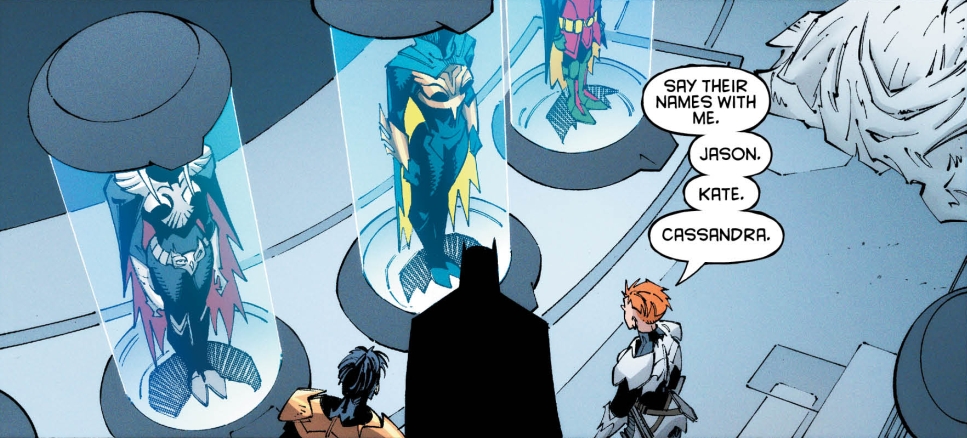Review: BATMAN: LAST KNIGHT ON EARTH #3

[Editor’s Note: This review may contain spoilers]
Writer: Scott Snyder
Artists: Greg Capullo, Jonathan Glapion
Colours: FCO Plascencia
Letters: Tom Napolitano
Reviewed By: Derek McNeil
Summary
Batman: Last Knight On Earth #3: Gotham City has been remade. Omega reigns supreme. Can Batman finally accomplish what no other hero has and free the world from his dark reflection’s shadow? Or is it too late for the recreated Caped Crusader?
Positives
Scott Snyder has described this series as being his version of the Dark Night’s final story. So, it seemed surprising the Batman featured in the story is a clone of Batman, rather than the original. However, Batman: Last Knight On Earth #3 makes it clear that this is a story of the original Bruce Wayne. It turns out that he isn’t dead, but has become the villain Omega.
In the movie The Dark Knight, Harvey Dent stated, “You either die a hero, or you live long enough to see yourself become the villain.” This is the end that Snyder has envisioned for Bruce Wayne. In his struggle to eradicate crime, he has established complete control of Gotham by use of mind control.
Snyder introduced Bruce’s plane to use clones to succeed him as Batman in 2014’s Detective Comics #27. It is this that ensures that what is heroic in Batman survives, despite the original turning down this dark path.

Positives Cont.
It is also rather fitting that Joker’s allying with the clone Batman ends up with him playing a role in the downfall of the original Batman after all. And it was hilarious to see the Joker use armour invented by Tim Drake as a new body and become a new Robin. The Joker acting as a force for good, though a chaotic one, added a lot of fun to a rather bleak story.
And it was rather horrifying to see that Bruce had sunk so low as to use his former teammate, Martian Manhunter, as the means of subjecting Gotham to his will. By this, Snyder is showing us that if the Batman were to turn bad, he would go completely evil. There are no half-measures with the Batman.
But the ending is what truly shows that the Batman clone has restored hope to the dystopian future timeline. We see Batman and his allies greeting the arrival of a familiar Kryptonian spaceship containing a certain baby. It appears that Luthor finally succeeded in bringing a living superman from another reality.
Superman is the foremost symbol of hope in the DC Universe, so the arrival of a new infant Superman is an extrememely significant event. It will likely take a Superman raised and trained by a Batman to restore this version of the DCU to greatness. This ending is the perfect optimistic note to end the story on.
Negatives
The main problem with this issue was the long gap between the second and third issue. With nearly five months between the issues, I didn’t clearly remember the previous chapters on my first reading. This led me to being very confused by the ending.
Why would Superman’s rocket be landing in the future, when Superman had already existed in that timeline’s present? It wasn’t until I reread the issue #2 that I remembered that Luthor had been trying unsuccessfully bring in another Superman from another timeline.

Negatives Cont.
However, that isn’t a flaw of the story itself, just in the manner of its release. Future readers will be able to read the three issues together or the whole story in a trade paperback, so they won’t be bothered by this issue. It’s just a shame that the first batch of readers had to deal with this gap between issues.
Verdict
In Batman: The Last Knight On Earth #3, Snyder demonstrates the common thread of DC’s Rebirth initiative. Snyder presents us with a horrendously bleak dystopian future for the DCU, yet Batman redeems that future, reviving the hope that lies at the heart of the DC Universe.
